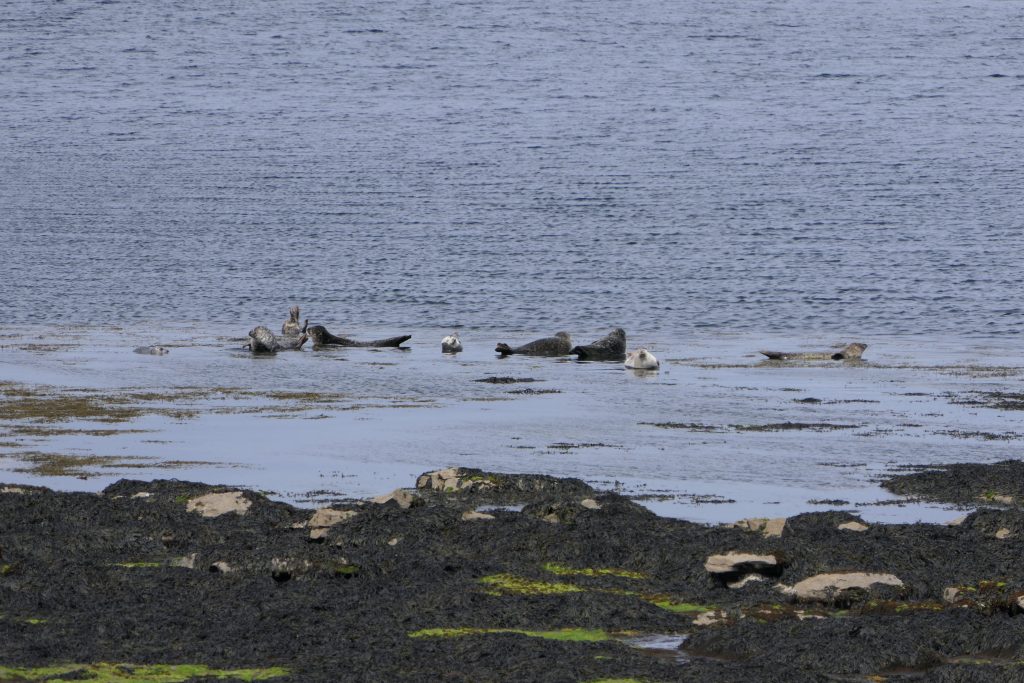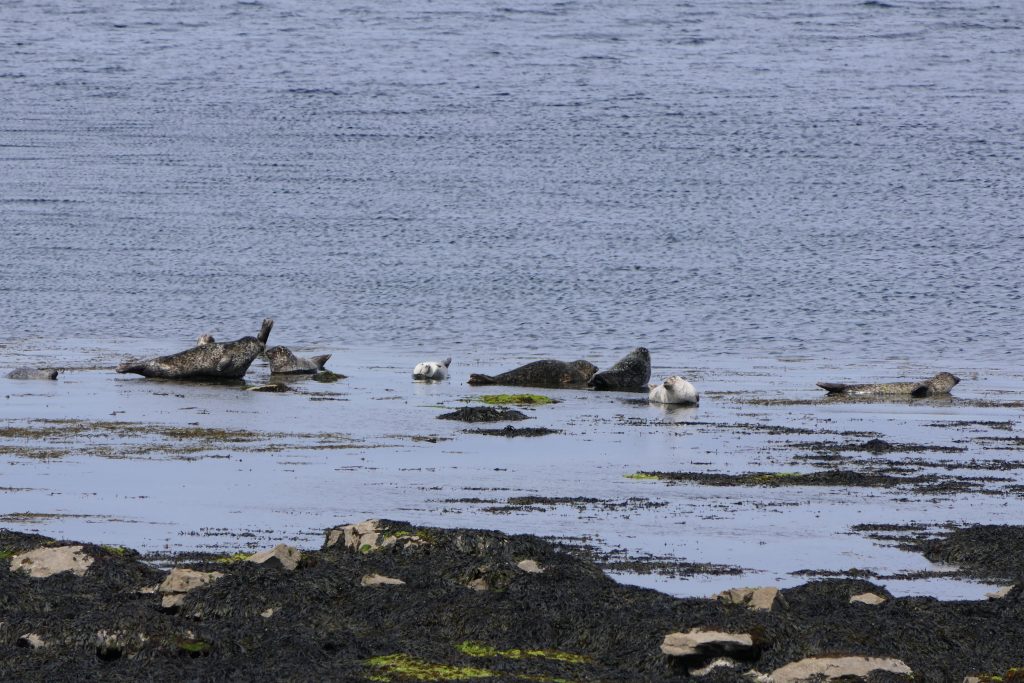

The marine ecosystem surrounding Inis Mor is significantly influenced by common seals (Phoca vitulina). They are frequently seen in the seas close to the island and around the beaches where they are also known as harbor seals. These seals play a significant role in many ecological processes and the island’s biodiversity.
Common seals are mostly found in coastal seas and along rocky shorelines, where they feed mostly on fish, particularly herring, sand eels, and flatfish. Their presence and eating patterns assist in controlling fish populations and preserving equilibrium in the marine ecosystem. Common seals can affect the distribution and abundance of their prey by feeding on specific fish species, which affects the dynamics of the entire food web.
Common seals have also been observed hauling out or relaxing on Inis Mor’s rocky and sandy beaches. For the seals, these haul-out locations offer crucial resting and breeding grounds. The beaches and rocky areas provide safe havens for raising their young while the females give birth to their pups on land during the breeding season. For common seal populations to successfully reproduce and survive, these haul-out locations must be safeguarded.
Additionally, common seals support the marine ecosystem’s nutrient cycling. They transfer vital nutrients from their excrement, known as guano, into the nearby seas. This nutrient enrichment can promote the growth of marine plants and algae, which will benefit a variety of creatures and serve as the foundation of the food chain.
During our survey, we have come acrossed many tourists who were disturbing the seals, by coming very close to them. We being an ecological students felt very bad about the species presence. Human activities have the potential to disturb ecosystems, including those on Inis Mor. Habitat loss, pollution, overexploitation of resources, introduction of non-native species, and climate change are among the ways in which human actions can disrupt the balance and functioning of these natural systems. Recognizing these impacts and adopting sustainable practices is essential for mitigating the negative effects and promoting a harmonious coexistence with the environment.